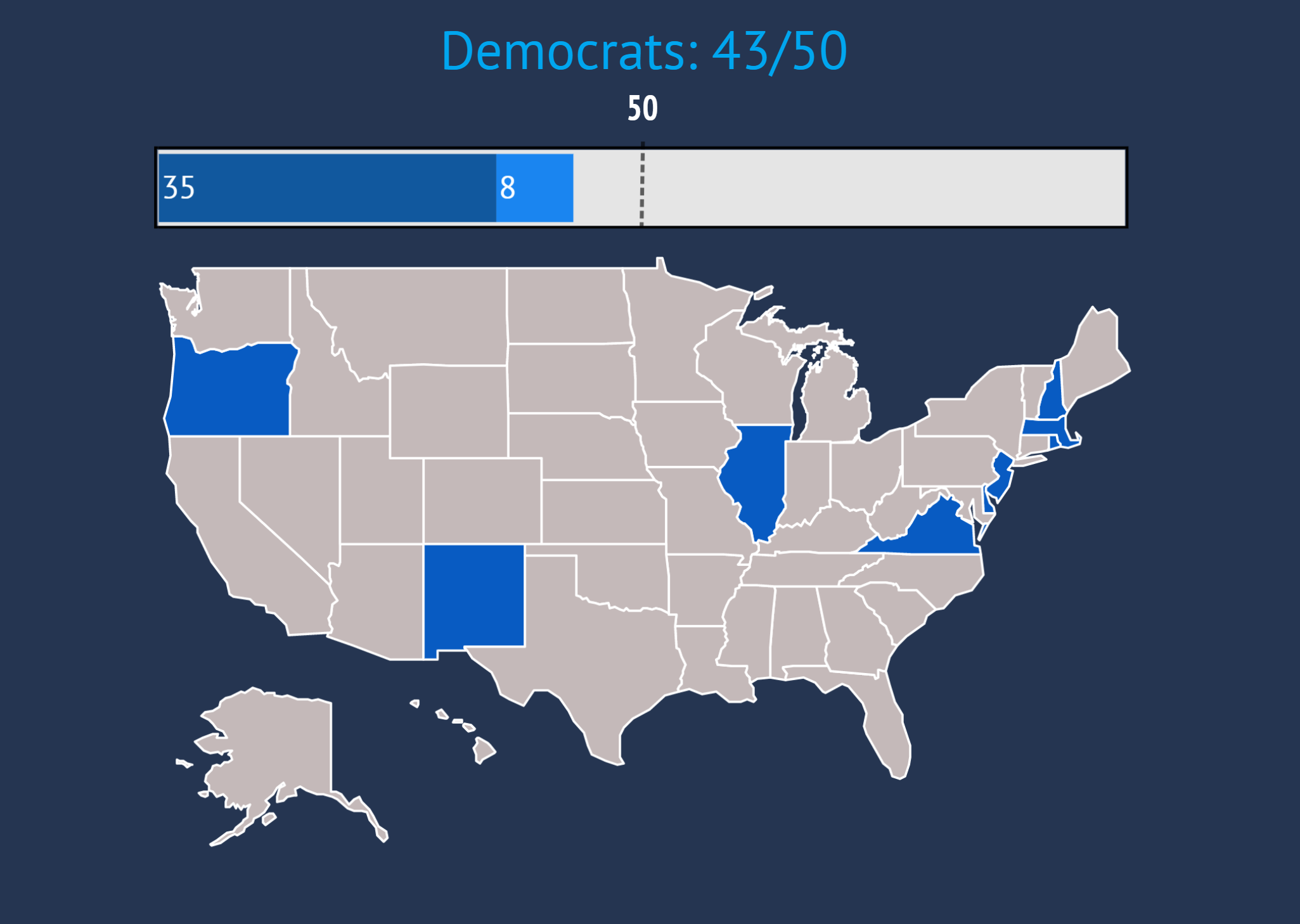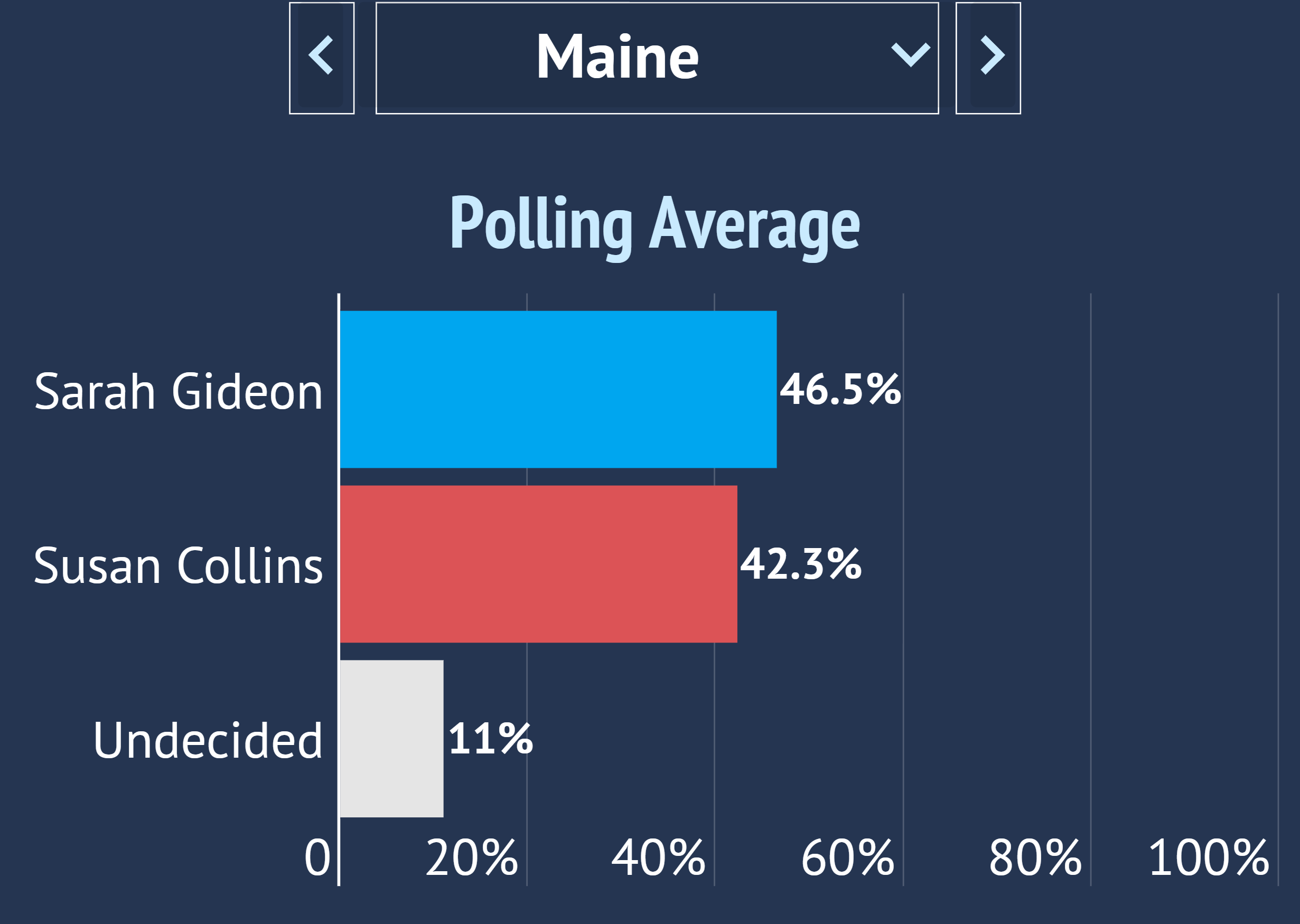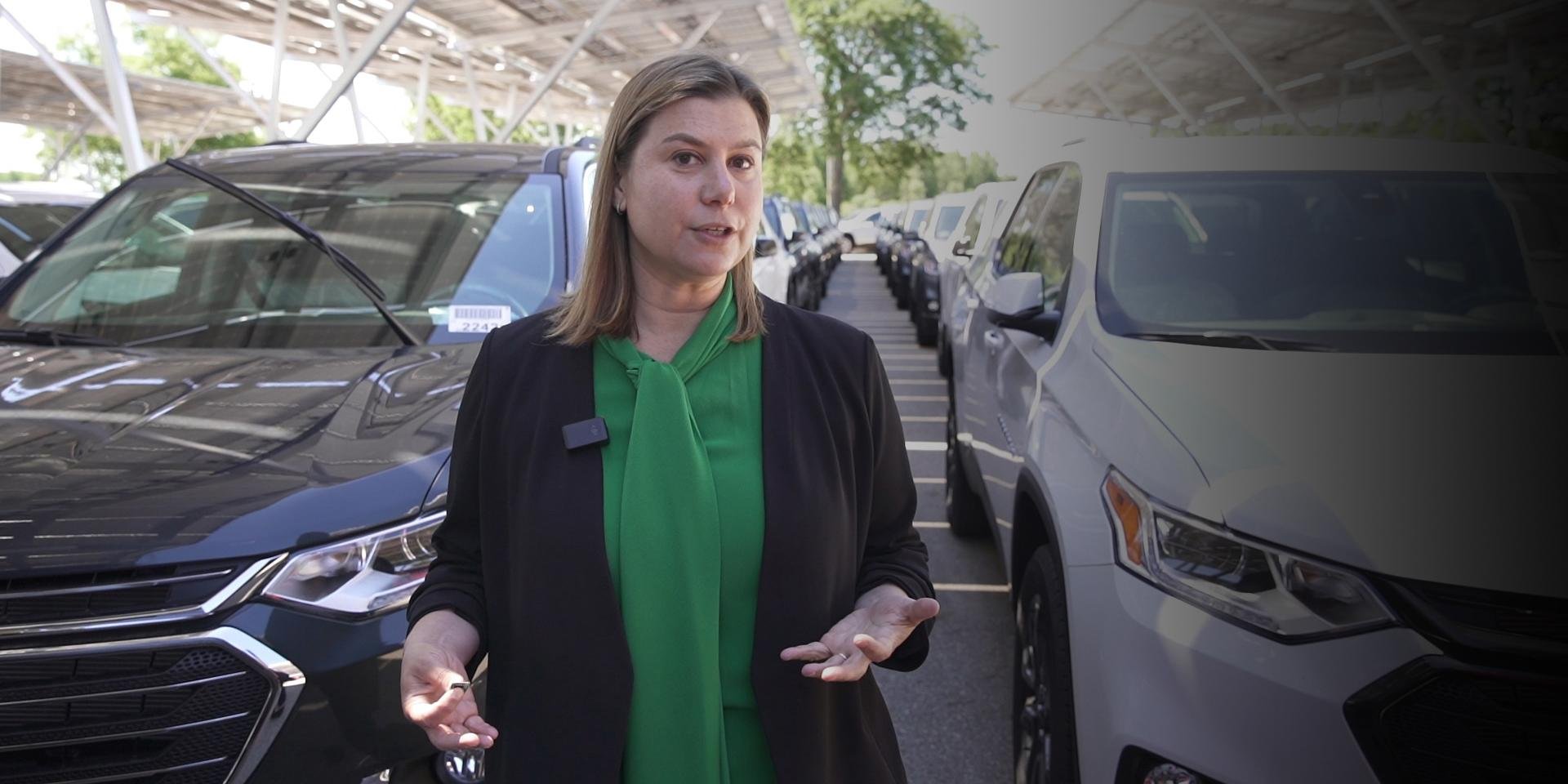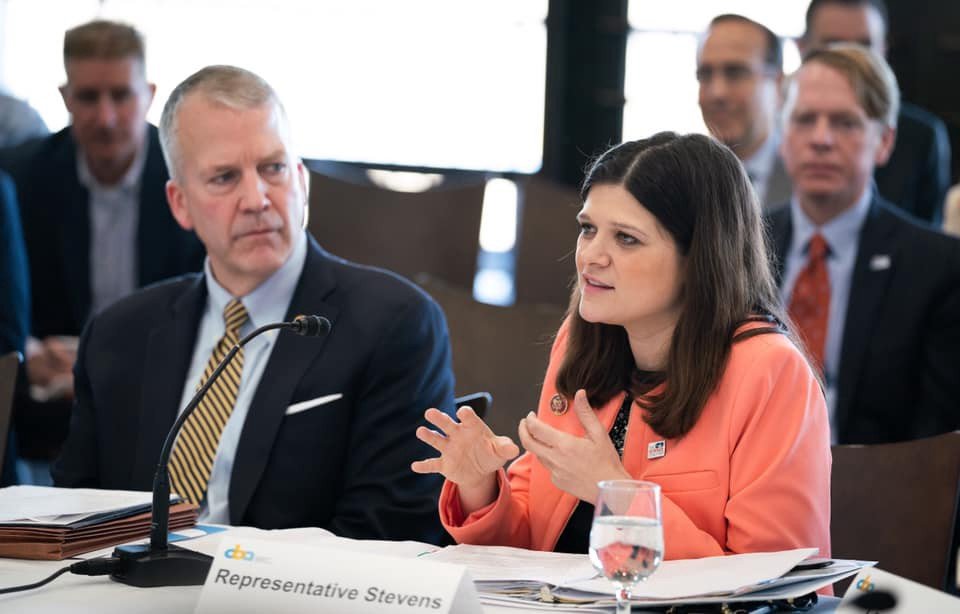The Essential Guide to how Democrats Can Win the Senate
Photo Credit: Gage Skidmore from Peoria, AZ, United States of America / CC BY-SA (https://creativecommons.org/licenses/by-sa/2.0)
By: Logan Phillips
Date: September 7th
This is Part Two of the Six Part Definitive Guide to the 2020 Senate. Make sure you catch the next part by bookmarking racetothewh.com, or following us on Instagram, Facebook and Twitter
Schedule:
Sunday: The Big Picture - Part One
Monday: The Democratic Pathway to Victory
Tuesday: The Republican Pathway to Victory
Wednesday: Where Democrats have the Edge - Part Three
Thursday: Race with Republicans Out Front - Part Four
Friday: The True Tossup States - Part Five
The Democrat Pathway to Victory
It’s been six years since Democrats were swept out of the majority, but in 2020 they have a shot to return the favor to the Republican party. Joe Biden has laid out an ambitious agenda aimed at getting America back off its feet in the wake of the coronavirus, but for it to actually be put into action Democrats are almost certainly going to need to win the Senate. Republican Majority Leader Mitch McConnell has arguably shown less appetite for bipartisan compromise then any of his predecessors in the last seventy years. Despite the former Vice President’s pension for working across the aisle, it’s more than a little bit unlikely that McConnell will change tactics and discover the joys of forging consensus in his eighth potential term as leader of the Republican party.
Therefore, the success of a potential Biden administration is likely contingent on Democrats winning the Senate. A sweeping victory will enable Democrats to work around the sixty vote filibuster far more often - while it’s not easy to win over five Republican Senators over to support legislation, it’s far harder to find ten.
Today, the pathway to a Senate victory is far more promising for Democrats then it ever looked in 2016 or 2018. To be clear – that path is far from assured, and Republican still have an excellent chance of an upset. Democrats will need to execute their advantage in the states where they have taken the upper hand, and break into at least one state where Republicans are ahead.
Safe Democrat States (95%+ Chance of Winning)
They are in a great place to do exactly that in New Hampshire, Virginia, and six other states shown on the map to the right. Combined with the 35 seats they hold that aren’t up for reelection in 2020, and Democrats would have 43 seats, with seven or eight to go (depending on whether they win or lose the White House).
Democrats can significantly improve their odds of victory by securing wins in Arizona, Colorado, Michigan and Minnesota – four states where they have at least an eighty percent chance of victory. Of the four, polls indicate the hardest state to win might be Minnesota, which is one of the few that Republicans have gained ground in over the summer.
Senate Races
In-depth projections for every Senate Race that are data-driven and evidence based, while being fun to read and easy to understand.
Second, they’ll want to lock down Maine and North Carolina – two states where Democrats have emerged as modest favorites. Susan Collins is currently losing, but she is far from out of the race, and has successfully crafted a brand distinct enough from Donald Trump that should enable her to outpace the President even if he loses Maine by wide margins.
Meanwhile, North Carolina Senator Thom Tillis represents a state that is far more friendly to the GOP brand, but his support is a bit shaky with Trump’s base. This has Tillis increasingly on the ropes, especially as Democrat Challenger Cal Cunningham has shown a surprising propensity to win over Trump supporters.
Chances of of Winning Based off the # of Likely and Lean Democrat Seats they win
(Arizona, Colorado, Maine, Michigan, Minnesota, North Carolina)
Locking down five or all six seats will put Democrats in the driver’s seat. When Democrats meet this goal, they win the election 87% of the time in our Forecast over 50,000 simulations. When they win only four, their win percentage shrinks to just 31%.
From this point on, things get a lot crazier and a bit historic. There is smorgasbord of swing states that could flip in either direction. We tested our forecast in every year since 2000, and there are far more tossups and seats in play in 2020 then any cycle this millennium. The good news for Democrats is that there are six tossups and if they win all the states they lead, they will only need to win one or two to secure victory. The bad news? Republicans have at least a slight advantage in all six.
Underscore slight when it comes to Iowa, their best target on the list, where Republicans only have a 51 % chance at victory. If they fall short there, there are two seats in Georgia this cycle. Surprisingly, Alaska are very much in play as well. Senator Dan Sullivan barely won election in Republican’s best year in decades (2014), and polls show him tied against Dr. Al Gross.
Perhaps because of the epidemic and years of high-profile fights over health care, Dr. Barbara Bollier is also punching way above her weight in deep red Kansas, trailing by 2% with an enormous advantage in fundraising. Finally, Governor Steve Bullock has done an exceptional job managing the coronavirus in Montana, and remains extremely popular. He is within the margin of error in the head to head polls.
Finally, even if they lose these seats, Democrats also have a promising opportunity in South Carolina. Jamie Harrison has astounded expectations, outraised Senator Lindsey Graham, a proper fundraising juggernaut himself, and has cut his deficit from 15% to 2%. If Joe Biden can recreate Obama’s turnout among African Americans in South Carolina and cuts his deficit in the Presidential to about five percent, and Harrison can win over enough split ticket independent and white college educated voters frustrated by Graham’s recent transition into a partisan firebrand, then Harrison could steal out a victory and win the biggest upset since Heidi Heitkamp took North Dakota in 2012.
There are other seats that are certainly worth watching for Democrats – but I suspect they’ll only be able to flip them in the type of national environment that would have enabled them to secure 50-51 seats elsewhere and are on the verge of a true landslide. These include Mississippi, Kentucky, and Texas.
Senate Forecast
Next Up:
On Tuesday, we’ll release Part Three of the Essential Guide to the Race, and look at what it would take for Republicans to keep their majority. On Wednesday, we’ll take a look around the country at the single most important elections that will determine the nation’s future. We’ll start with the races where Democrats have taken the lead – like Arizona, where Astronaut Mark Kelly has rocketed ahead and left Republican Senator Martha McSally stranding behind in orbit.
Then, on Thursday, we’ll focus in on the states where Republicans have the advantage but where Democrats could still break through – including South Carolina, a deep red state where Jamie Harrison has astounded expectations and become a genuinely viable underdog against longtime incumbent Lindsey Graham. Finally, on Fridaywe’ll end with the most competitive races in the nation where neither side has a decisive edge – including Iowa – where Republican 2014 breakout star Joni Ernst has been unable to shake political newcomer Theresa Greenfield in a an election that will almost certainly go down to the wire.
Senate Races
While you wait for the next part, you can check out our extensive breakdown of every Senate Race. We have in-depth, scientific and data driven projections that are nonetheless easy to understand and fun to look at. They tell you who we think is going to win and how we came up with our projection - and then shows you everything you need to know to make your own conclusions about the race. That includes polling, how popular/unpopular the Senators are, what the political landscape looks like in the state, who has raised the most money, and what type of experience the candidates have. We update the Forecast every single day there is new polling and data available.
Make sure you don’t miss the next piece by bookmarking www.racetothewh.com, or by following us on Facebook, Instagram and Twitter.
















